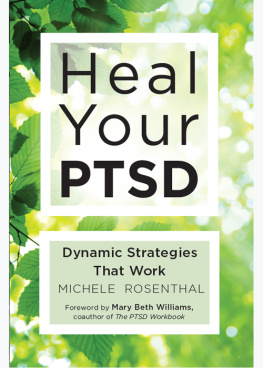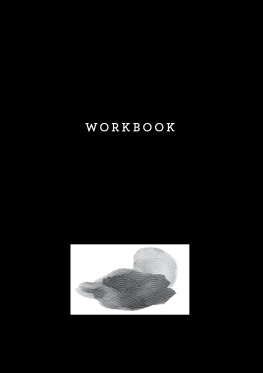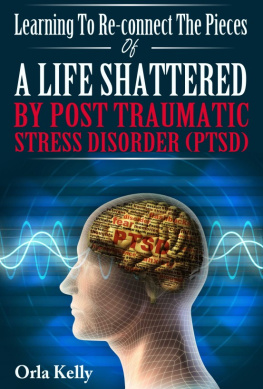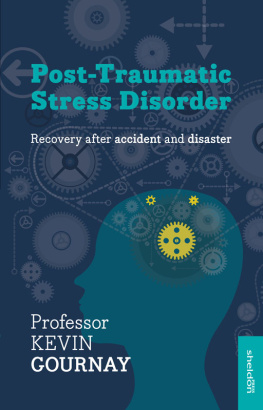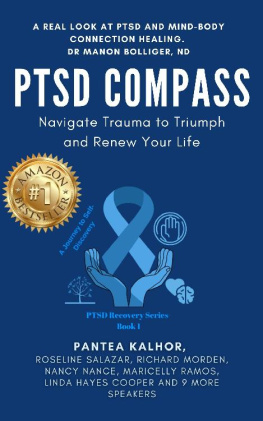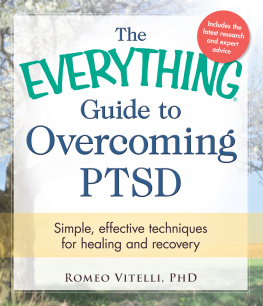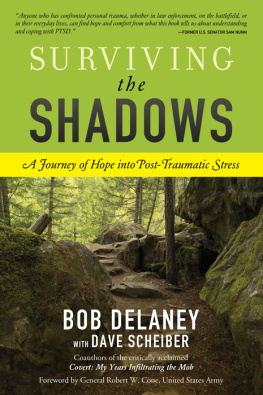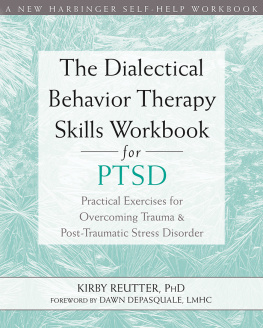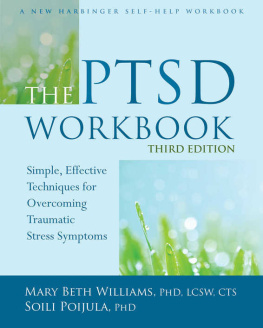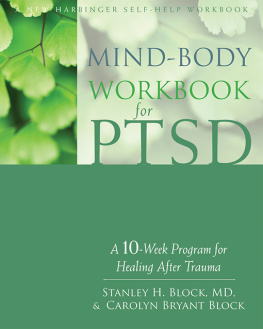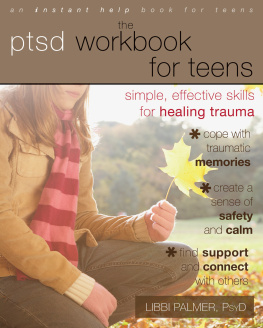Other Books by Michele Rosenthal
Before the World Intruded:
Conquering the Past and Creating the Future, A Memoir
Your Life After Trauma:
Powerful Practices to Reclaim Your Identity

This edition first published in 2015 by Conari Press
Red Wheel/Weiser, LLC
With offices at:
665 Third Street, Suite 400
San Francisco, CA 94107
www.redwheelweiser.com
Copyright 2015 by Michele Rosenthal
All rights reserved. No part of this publication may be reproduced or transmitted in any form or by any means, electronic or mechanical, including photocopying, recording, or by any information storage and retrieval system, without permission in writing from Red Wheel/Weiser, LLC. Reviewers may quote brief passages.
ISBN: 978-1-57324-637-8
Library of Congress Cataloging-in-Publication Data available upon request.
Cover design by Jim Warner
Cover photograph irin-k / shutterstock
Interior by Maureen Forys, Happenstance Type-O-Rama
Typeset in Adobe Text and Gotham Pro
Printed in Canada
MAR
10 9 8 7 6 5 4 3 2 1
www.redwheelweiser.com
www.redwheelweiser.com/newsletter
For you, in honor of
your willingness to hope,
your openness to change,
your desire to be free.
CONTENTS
The information provided in this book is not intended as a substitute for professional medical advice but as an important supplement to it. If you are experiencing any serious symptoms that you have not yet discussed with your doctor or other health care professional, please seek medical attention.
FOREWORD
T here are many approaches to treating the multiple faces of trauma. Because traumatic impacts are so individualized, a one-size-fits-all approach does not allow for treating those personal short- and long-term impacts in ways designed to each person's needs and circumstances. Recent changes to the recognized definition of post-traumatic stress disorder in the Diagnostic and Statistical Manual of Mental Disorders (DSM-5) have modified what constitutes a traumatic stressor to include exposure to actual or threatened death, serious injury, or sexual violence through direct experience, witnessing, learning that the victim is family or friend, or repeated exposure to traumatic details through work.
As Rosenthal aptly states, having knowledge about trauma and PTSD empowers and helps those who have been traumatized begin and follow through on their recovery journeys. One important component of knowledge is the mind-body connection. This interaction of mind and body means that traumatic events exist beyond the time in which they occurred not only in memory and emotion (hippocampus, amygdala, depending on the type of memory), but also in brain structures and body reactions. In her book Molecules of Emotion, Candace Pert states that the emotions engendered by trauma are held in the cellular structure of the self. Rosenthal does an excellent job describing brain structures in the head brain as well as long-term impacts. She reinforces the scientific findings that trauma impacts the hippocampus in its attempts to process, consolidate, and store traumatic memories that may end up as hippocampal shrinkage and atrophy and amygdala growth as emotions and intrusive symptoms take over. One major truth presented in this book, however, is that these impacts are not necessarilynor do they have to remainstatic. The brain is plastic and can remodify itself. However, the first requirement for change is the desire to change. Committing to change and recovery is a major step in re-creating the self.
Lying behind this process of re-creation is the recognition that there are five major psychological needs, each of which has accompanying belief structures relating to the self, others, and the world. As Rosenbloom and Williams (2010) wrote, these five needs of safety, trust, power/control, esteem, and intimacy are core self-structures that are impacted by traumatic events and may appear to be permanently changed. Some researchers believe that changing those negative, altered beliefs is difficult, if not impossible; however, another key truth in Heal Your PTSD is that working with and challenging those beliefs, often through the substitution of more positive ones, is a key to healing.
An individual must truly want to change if any change is to occur (). Many of the statements in this book illustrate this healing process.
Safety:
- Restoring your identity after being traumatized leads to a grounded sense of safety ().
- Safety comes from things you can depend on ().
Trust:
- Trust the process of healing. There are many truths in this workbook that will guide you through that process.
- Trusting yourself is a learnable skill ().
Power/Control:
- Challenging emotions and maintaining control over them is powerful as you challenge your mind to hold emotions inside that are positive and negative. One emotion ultimately wins.
- You cannot change what happened to you, but you can change how you function in the present and future as you choose to define who you are ().
Esteem:
- Your sense of self-worth begins with believing you matter ().
- Higher self-esteem can regulate emotional distress ().
- (It is important) to identify what you are good at and (then) do it often ().
Intimacy:
- Connection and reconnection (with self, mind/body, others, and your world) is necessary for healing.
In conclusion, Rosenthal reminds the reader in many ways that challenging beliefs (and hopefully changing the destructive ones) is one of the most important aspects of healing from a traumatic event or events that has changed the survivor. In other words, your beliefs are who you are ().
MARY BETH WILLIAMS, PHD, LCSW
ACKNOWLEDGMENTS
B y the time I finish writing a book, I'm always amazed by how the original idea has evolved: What began as a small concept with a zillion fragments somehow transforms into a cohesive and marvelous whole. This is part of the fun of writing. While you're not looking (or, busy looking elsewhere), magic happens.
The magic of this book began with an email from my first editor, Amber Guetebier, inquiring whether or not I had an idea for a book. Yes, I said, as a matter of fact I did. For several years I'd been writing a Healing Thought of the Day for the HealMyPTSD.com audience. Many survivors had expressed the desire to have the thoughts collected in a book. Amber liked the suggestion, and with her help, the fantastic team at Conari came on board. Great thanks to the entire Conari family who saw the potential of my idea and helped cast the spell that created this book, including Jane Hagaman and Charles Hutchinson. Special thanks goes to my second editor, Caroline Pincus, for so graciously stepping in and appreciating the book's intention, and Eryn Carterthe only marketing professional I know with a degree in social mediafor helping put the abracadabra in materializing this book in the world.
Without Sheila Levine at Levine Samuel, LLP, I wouldn't know my way around a contract. Much thanks goes to her for being a great friend and mentor, and also for continually making sure that I know what to sign and when. Thanks also to my assistant, Maria Dal Pra, for conjuring the first compilation of healing thoughts.
All of the books I write begin with a desire to be helpful, which means that the trauma survivor community of which I am a part is a constant source of inspiration, illumination, and motivation. Thanks to all colleagues for the creative time we've spent in the trenches swapping suggestions for how to be even more effective at helping survivors heal. Special thanks to every survivor with whom I have interacted from private and group clients to those who have reached out via my website, email, social media, and the Heal My PTSD forum. By sharing, in conversations, your thoughts, dreams, and struggles, you allow us to explore what can lead to healing resolutions. By implementing my sometimes crazy-sounding suggestions, you've all helped build a sandbox in which we refine ideas and see what works. We're truly all in this together.
Next page
